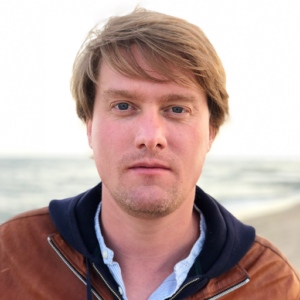In a career spanning more than 70 years, Magnum photographer Elliott Erwitt had photographed politicians, movie stars, beaches, dozens of children and hundreds of dogs. He was one of the few photographers who could make people laugh with his images and most importantly, his photos used humor like no others to raise consciousness on serious topics. Rick Smolan, a photographer and Erwitt’s son-in-law, confirmed the sad news in an email this afternoon: “At 95 it was a pretty good run, and while I know he was incredibly modest I hope he took pride in the impact he had for so many decades on so many lives. When you think of all the photographers he inspired, it’s pretty astounding.”
Erwitt belonged to the era of the early days of Magnum defined by passionate and committed comrades, Robert Capa, Cartier-Bresson… The eccentric, mischievous son of a Russian immigrant, who spoke fluent French and possessed unsatiable curiosity, Erwitt understood very quickly that his art must remain a hobby.
Born in Paris in 1928, “Elio” arrived in New York at the age of ten, after spending his childhood in Italy. He got into photography at fifteen, officially to “earn a living.” His first real camera, “a photographer’s notebook,” was a Rolleiflex. He had a great sense of humor, talent, and a prankster’s eye. Already in his early photos he was a master of derision. He would poke fun at the world, de-dramatize what should be shocking, hunt down the comical, and photograph the street as if it were a comic strip.
Humor
From the start, Erwitt was constantly “watching people, things, and human behavior.” Spying was his favorite pastime, and he kept a camera close, tethered by a lanyard. But there were moments he did without. “When I go to relieve myself, I don’t bring the camera. My mind is on other things,” he liked to joke. A sign over the toilet in his bathroom kept the user on track: “Please aim directly.”
Erwitt has always had a penchant for jokes and witticisms. Jimmy Fox, editor-in-chief at Magnum in the 1960s, could spend hours recounting Erwitt’s antics. Like the agency’s New Year’s Eve party, when the photographer came dressed up as Santa Claus, or the pranks he played to lighten the mood: “When people were too tense on a shoot Elliott would get out an old car horn and blow it to make people laugh and loosen them up.”
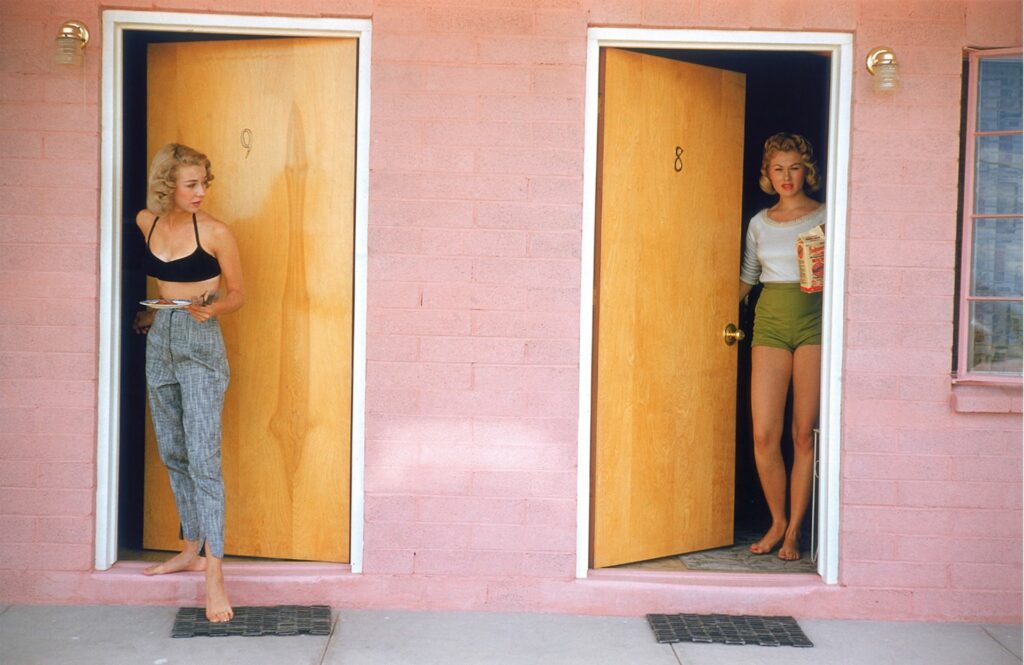
A bit of a rabble-rouser, but without a mean bone in his body, Erwitt was a kind of an intellectual of humor. He always denied it, claiming he had a “poor education.” But he used his wit to attract the eye, to capture whatever surprises or moves him, or what he found amusing. His gaze constantly oscillated between joy, astonishment, and sadness.
“Elliott’s photos should be inserted into survival kits. When you’re desperate, they can save your life.”
Ferdinando Scianna, Magnum photographer
He made the spectator aware of serious subjects, questioned the world, and rejected indifference. Ferdinando Scianna, another Magnum veteran, and a great photographer with similarly impeccable French, knows Erwitt in and out: “You can’t be ironic without being intelligent. Elliott’s photos should be inserted into survival kits. When you’re desperate, they can save your life.”
Men and women
Elliott Erwitt may have been a dreamer, but he always kept one foot firmly on the ground. He observed the “human comedy” like a sociologist. Scianna said it best: “Elliott is an eminently political photographer. He likes to show differences between people, always using mockery to avoid being too buttoned up.” Erwitt’s famous photo of the segregated drinking fountains falls into this category. The paradoxical composition of the scene highlights the inanity of racism: the black fountain is for the whites, and both races share the same water supply. Similarly, “when a Black soldier sticks out his tongue at the camera, that’s Elliott Erwitt making faces at the military establishment.”
There is no secret to good photography. With Erwitt, everything seemed easy. “In photography, thinking isn’t of much use, you have to see.” There is no special recipe, but there were mentors, starting with Capa, who brought Erwitt into Magnum, an agency he worked with throughout his life and later directed. Henri Cartier-Bresson, the man who taught young Elliott to always go out armed with a camera, once said: “To photograph is to put on the same line of sight the head, the eye and the heart.” From this “gold standard,” as he calls it, Erwitt learned how to forge his own style, to learn to find the moment, of course, with a precise dose of the heart, the eye, and the mind.
“Don’t worry, it’s Sting.”
He never talked much about the subject. Nor, as a matter of fact, does he talked much at all. Erwitt was eloquent in his silence. Modesty is perhaps one of the secrets that allowed him to aim his lens at many celebrities: Marilyn Monroe, Che Guevara, Clark Gable, and John F. Kennedy, whose family appreciated him in particular.
The photographer had always been close to celebrities. In 2010, he opened the imposing metal door to his ground-floor studio in his home in Central Park West for a visit of his archives. Later, in his apartment a few floors above, the sound of the piano could be heard from another apartment. It was his neighbor playing. “Don’t worry, it’s Sting.” The English singer penned a note in Erwitt’s latest book, Found Not Lost, published in 2021, citing him in one breath with the biggest names in American photography.
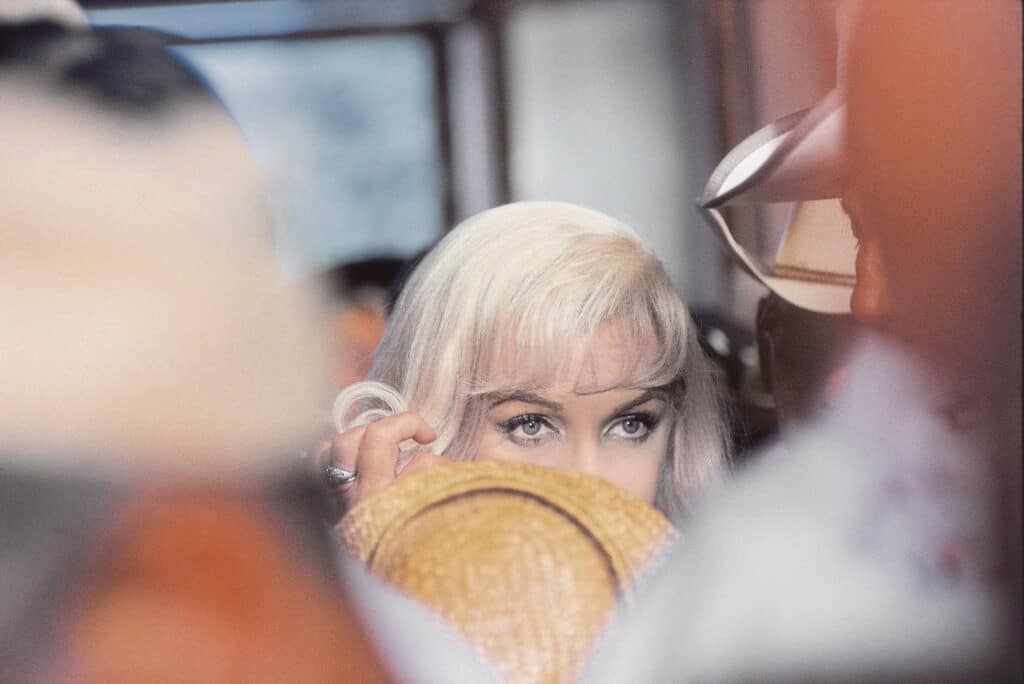
Erwitt’s name is also synonymous with poetry and glamour. An 2023 exhibition at the Maillol Museum in Paris presented several of his iconic fashion photos, including the delightful shot of a black cat poking its head between the perfect legs of a model, or the photo of Marilyn with unmistakable blue eyes and blond curls. Scianna, who knows a thing or two about the genre, comments: “Elliott always knew how to get an extraordinarily sensual look from all the women he photographed.”
Pia Frankenberg, Erwitt’s ex-wife, said he was laconic and, like many artists, hard to pin down. In a 2003 interview with The Guardian, she recalled, “Now that I know him, I feel for everyone who is a little intimidated because they don’t know how to handle him. It is like when people think that comedians are funny people and they are not.” One of the—a total of four—women he married famously played a trick on him by hiding the negatives of his best photos in a bed after their separation had been announced. The negatives were reported missing and were only found years later.
“I am a craftsman. I often say that I am a photographer with a hobby, which is photography.”
The nonagenarian had made a lot of money from commercial photography. Take the ad campaign for the French Office of Tourism, memorable for the picture of a man on a bicycle, with his son and a baguette on the rack, which is now in museum collections. With the proceeds, Erwitt was able to purchase a house at the edge of Central Park and a second home in the Hamptons. But he had known much less prosperous times. He remained a humanist, close to the “little people,” and turns a critical eye on the rich and the powerful. “One could say that I am on the Left,” he said reluctantly. What place does the human being have in his photography? “The human is neither a flower, nor a building, nor an animal.”
Dogs
Elliott Erwitt was a collector of images. He often has to let them mature, like good wine, before bringing them to the public. Dogs were among his favorite subjects. He immortalized them in human poses: a way to put man and animal on the same level. His passion for the canine species developed over time, when he realized that they were abundantly represented on his negatives.
In recent years, Sammy, a Scottish terrier born in Hamburg, could still be seen wandering around Erwitt’s apartment: a multilingual refugee, a bit quirky, gentle, and quiet, just like his master. Before that, there were others, bigger ones, like Great Danes. Just ask Jimmy Fox. He knew these dogs well because he had to take care of them whenever Elliott Erwitt dropped off them at Magnum’s New York office before leaving on assignment.
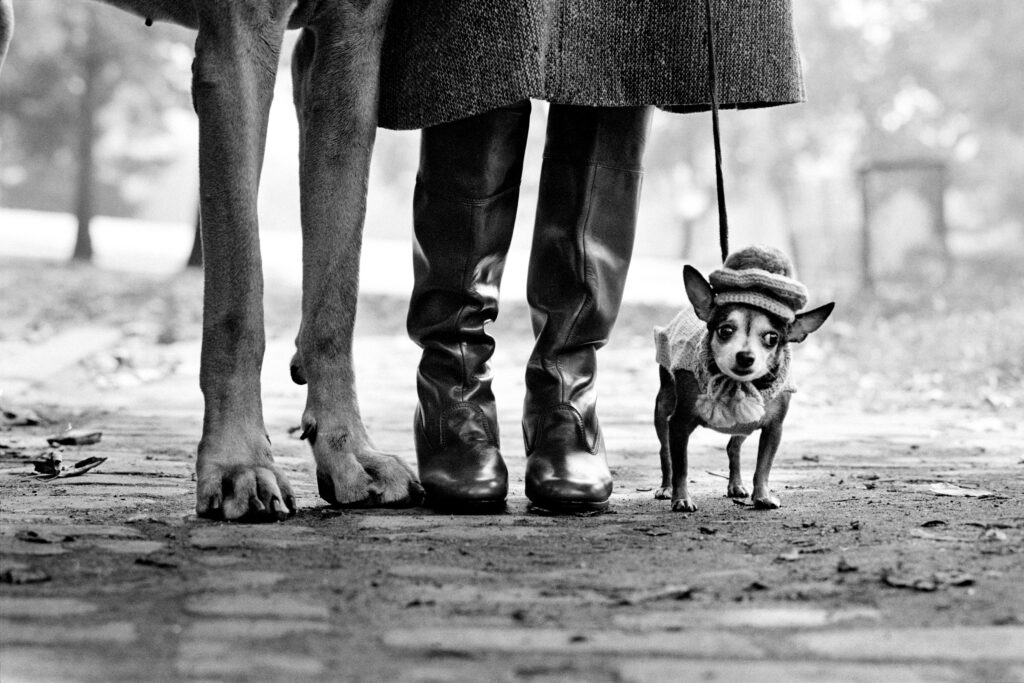
This old-timer in the world of photography had remained a child at heart: fully of whimsy and talent. “Elliott’s photos are recognizably his, and they have been from the very start,” says Scianna. “That’s a difficult thing to accomplish in photography. Normally, one gets there by exaggerating the form. In Elliott’s work, the form appears to be simplicity itself.”
In an interview with Le Monde in 2010 (probably one of the best interviews ever done with a photographer), Erwitt explained his philosophy: “I am a craftsman. I often say that I am a photographer with a hobby, which is photography. Most of my images are commercial, but I also take pictures for my own pleasure. Sometimes the two go together, but not always.”
In 2011, the International Center of Photography, awarded him the prestigious Lifetime Achievement Award. Did it mean his career was over? “No, the award wants only my life to be over.” In the decade that followed, the photographer published seven books, some including never-seen photographs, and produced several retrospectives and themed exhibitions, for example about England, Scotland, or simply about color. The man never stoped. Mr. Erwitt, how did you learn how to photograph? “I read the instructions on the back of the box.”
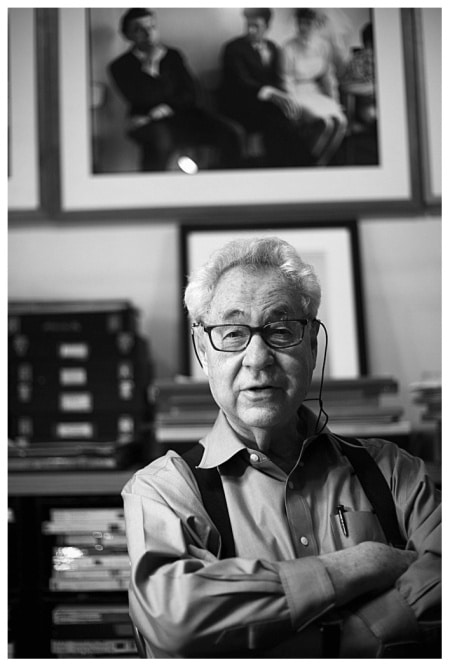
More information and photos on Elliott Erwitt on Magnum’s website.
100 photos for press freedom, Reporters sans Frontières – Eliott Erwitt, Released November 2, 2023.
Cover photo: Elliott Erwitt in reflection, Tropicana Hotel, Las Vegas, Nevada, USA, 1957 © Elliott Erwitt / Magnum Photos

